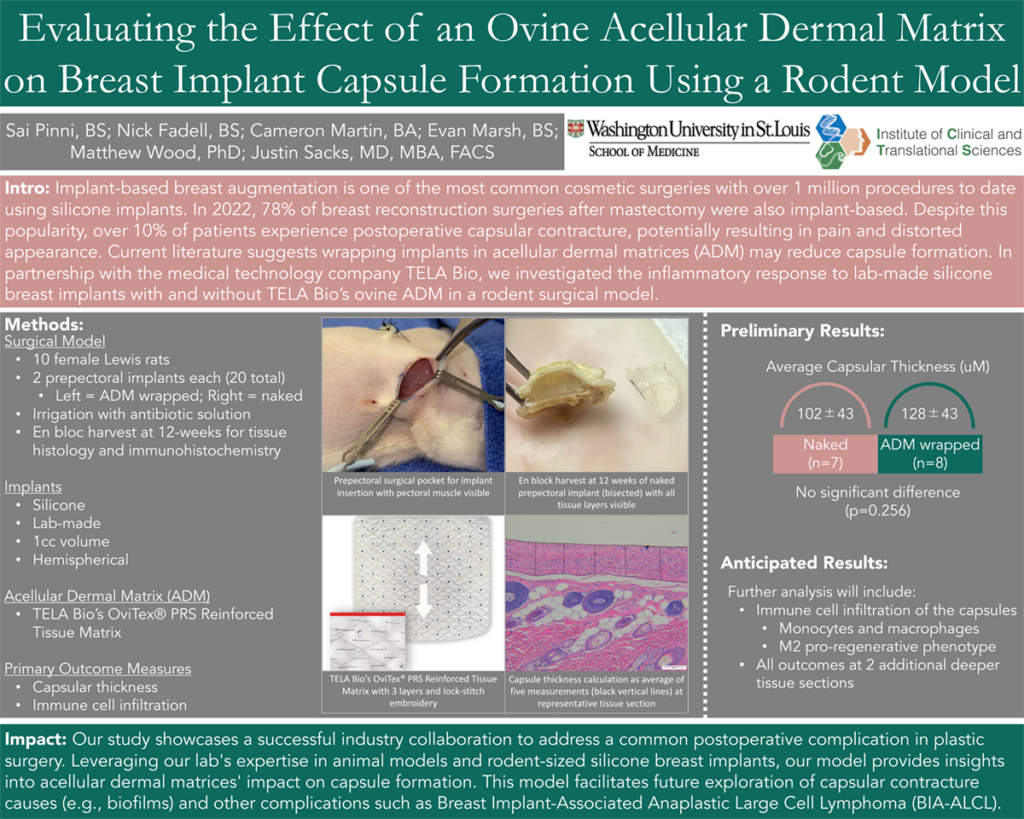
Introduction: Implant-based breast augmentation is one of the most common cosmetic surgeries with over one million procedures performed to date using silicone implants. In 2022, 78% of breast reconstruction surgeries after mastectomy were also implant-based. Despite this popularity, over 10% of patients experience postoperative capsular contracture, potentially resulting in pain and distorted appearance. Current literature suggests wrapping implants in acellular dermal matrices (ADM) may reduce capsule formation. In partnership with the medical technology company TELA Bio, we investigated the inflammatory response to lab-made silicone breast implants with and without TELA Bio’s ovine ADM in a rodent surgical model.
Methods: Ten female Lewis rats each had two lab-made hemispherical silicone implants inserted bilaterally into the prepectoral space. The left implant was wrapped in ADM using TELA Bio’s OviTex® PRS Reinforced Tissue Matrix. Implant pockets were irrigated with antibiotic solution before and after insertion. Implants were harvested en bloc at a 12-week endpoint for tissue histology and immunohistochemistry. Outcome measures included capsular thickness and immune cell infiltration.
Results: Preliminary histological analysis showed no significant difference in average capsule thickness between the non-ADM implants (102±43 µm, n=7) and ADM-wrapped implants (128±43 µm, n=8) (p=0.256). Further analysis will include immune cell infiltration of the capsules (i.e., monocytes and macrophages, M2 pro-regenerative phenotype), as well as all outcomes at two additional deeper tissue sections.
Impact: Our study showcases successful partnership with industry to investigate a solution to a postoperative complication of one of plastic surgery’s most common procedures. Leveraging our lab’s expertise in animal models and ability to create rodent-sized silicone breast implants, our anatomically-relevant model allows for better understanding of how acellular dermal matrices can affect capsule formation around breast implants. This model also enables future investigation of capsular contracture causes (e.g., biofilms) and other complications like Breast Implant-Associated Anaplastic Large Cell Lymphoma (BIA-ALCL).
Organization: Washington University in St. Louis
Pinni SL, Fadell N, Martin C, Marsh E, Wood MD, Sacks JM